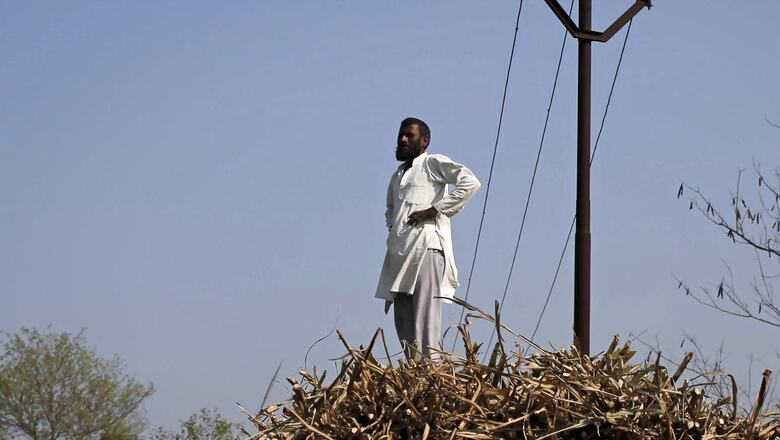
views
The farmer groups are all set to converge to decide how to take forward their demand for MSP as a legal guarantee. A section of farmers want a legal guarantee of minimum support price (MSP) for all crops. They do not want the government to procure all the crops but just pay the differential between market price and MSP to farmers. This is a made-for-disaster proposal and will lead to the collapse of India’s markets for agricultural commodities.
A few scenarios should be considered to understand the impact of legal guarantee of MSP on all crops. The farmer groups are not saying that they want the government to procure at MSP, but to pay the difference whenever the market price falls below MSP. This is similar to the Bhavantar scheme launched by the Madhya Pradesh government in 2017. The scheme was carried out for three seasons, for nearly 18 months, and then stopped.
The learning from this scheme is that paying the price difference to farmers is not a solution. To illustrate, the MSP for soyabean, one of the major crops in Madhya Pradesh, was announced under the Bhavantar Bhugtan Yojana at Rs 3200/quintal, higher by Rs 300-400 against the average wholesale price the farmers were getting earlier. The farmer lot was very happy. But when farmers went to the mandis with the crop the price had crashed to Rs 1800-2000 from Rs 2800-2900. Such a massive drop in price without any change in the demand and supply meant that the traders colluded to suppress prices, and the margins of the producers were wiped out in one stroke.
The arhatiyas had convinced the farmers that the government would give the difference and hence they should accept whatever was being offered. Every farmer, however, could not register for the scheme to benefit from it. The arhatiyas registered themselves as farmers and pocketed the difference into their accounts. In certain commodities, the benefit collected by the traders was 20-25 times higher than the production cost in the state. This happened through manipulation in registration, as there was no procurement and no physical transfer of the produce from the farmer to the government. The registration became the route for the traders to game the system at enormous profit.
The manipulation and diversion from the scheme was so huge that the government had to cancel the whole scheme within 18 months. Even the farmer associations asked for its cancellation.
The result of the flawed MP experiment, as demanded by a vociferous section of farmers, if repeated across the country will in all probability result in massive price crashes in several commodities across the country. This is a terrifying prospect for any farm producer, government or economy.
False Price, Artificial Scarcity
Since the MP Bhavantar scheme led to market collapse, the suggestion has been to cap the differential so that it will not lead to price crashes. Yet, even if the differential is capped at say 10 per cent or 20 per cent, this differential will set the new market price because traders will not pay anything more than that to the farmer. Hence, whatever be the differential, it will be adjusted in the new market price. Effectively, the market price is artificially depressed and the farmer producer is left to the whims of the government machinery in calculating and providing the differential. The production is based not on demand but on an artificial price and government largesse. Worse, traders will corner the “guaranteed” gains again in all likelihood.
The collapse of the market means that price is no longer being decided on the basis of demand and supply. Consequently, the production will not keep pace with market needs or demands. Farmers will grow not what is needed but what crop gets the highest MSP.
Therefore, the interest of the farmers will be delinked from demand and linked to protesting and pushing for higher MSP every year. This is what a collapsing market does: it distorts not just a market structure but also social and political structure. If demand does outstrip supply due to the artificial trigger of a false price, the real price will crash and buyers may also vanish from the market.
If buyers vanish, producers will also not produce it in the next season in the belief that their produce will not get a profitable rate and the crop produced will have to be burnt or destroyed. The resulting artificial scarcity will lead to imports to meet the real local demand.
This is not a hypothetical scenario or cycle; it has happened repeatedly in the past for several commodities. Needless government intervention in prices also means that when the imports are done to prevent inflation and public outrage, the politicians would be forced to give subsidies on the imported price to traders. More rounds of subsidies and government interventions would benefit not producers but traders or importers, in turn benefiting the subsidised producers or farmers in other countries who will supply these commodities to us. Malaysian, Australian or Canadian farmers would grow produce for India as the market in India is huge but Indian farmers have stopped growing that produce. This has happened with pulses and continues to be seen for oilseeds.
When Minimum Price is the Maximum Price
Of course with MSP as a legal guarantee for all crops, the minimum support price will effectively become the maximum price that the farmers can get in the market. The trader or arhatiya caucus in mandis will ensure that the price does not ever exceed the MSP. This in itself will poorly serve the interest of the producers as their margins will be limited by what the government sets as the MSP.
Farmers will not shift to crops other than wheat and rice as the yield on these crops is the highest. Farmers choose the crop based on the maximum yield or earnings per acre, not on the basis of just price per kg. If dal and maize have poor yields, even with guaranteed MSP, a farmer will not shift till such time it gives higher returns than wheat and rice. Wheat and rice are easy options as the yield is the highest due to huge investment in seeds and fertilisers. Government research labs have also focused all their efforts and energy on improving the various varieties of wheat and rice.
According to data available, on an average, productivity of paddy and wheat is recorded at around 27-28 quintal/acre and 20-21 quintal/acre, respectively, in Punjab. These are average yields and the range can be higher depending upon soil quality, availability of water and the quality of seed used.
With such yields, a paddy farmer can sell paddy worth Rs 51,000-Rs 53,000 per acre against Rs 36,315-Rs 37,660 per acre seven years ago. There is an increase of Rs 15,000-Rs 16,000 per acre. Similarly, wheat farmers can now sell wheat at Rs 39,500-Rs 41,475 per acre against Rs 27,000-Rs 28,350 per acre seven years ago.
If the wheat and rice kalchakra is not broken, the groundwater situation will further deteriorate and land will become unsuitable for agriculture.
The groundwater development (ratio of gross groundwater draft for all uses to net groundwater availability) in Punjab and Haryana is 166 per cent (highest in the country) and 137 per cent, respectively, which is well above the national average of 63.3 per cent. Of the 138 blocks in Punjab assessed for groundwater, 109 blocks have been categorised as ‘overexploited’, two as ‘critical’, five as ‘semi-critical’ and 22 as ‘safe’ with no saline block in the state. In Haryana, of the 128 blocks assessed for groundwater, 78 have been categorised as ‘over-exploited’, three as ‘critical’, 21 as ‘semi critical’ and 26 as ‘safe’(Central Ground Water Board, 2019).
Interfering with market forces and building artificial pricing models is neither economically sustainable nor environmentally. Farmers should avoid being misled by leaders who do not have their long-term interests in mind.
The author is CEO, Center for Innovation in Public Policy. The views expressed in this article are those of the author and do not represent the stand of this publication.
Read all the Latest Opinions here















Comments
0 comment